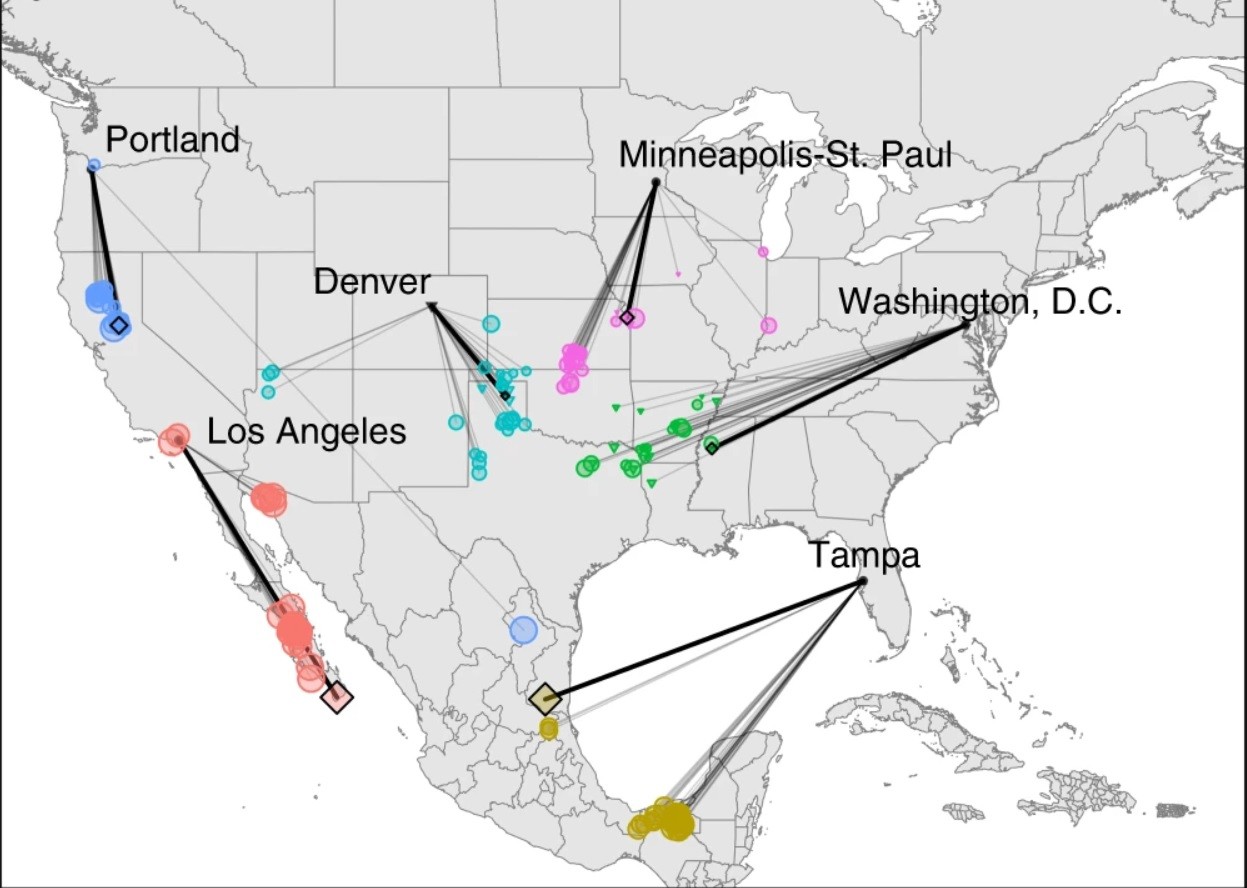Thanks, this is interesting
For anyone who is not going to read the article, the map shows what locations have the climate today, that the major city will have in 2080, under a variety of climate change scenarios
"Climates of most urban areas in the central and western U.S. will become most similar to contemporary climates found to the south or southeast (Fig. 2). Put another way, by the 2080s climate of cities in the northeast will tend to feel more like the humid subtropical climates typical of parts of the Midwest or southeastern U.S. today (warmer and wetter in all seasons, Supplementary Figure 2), whereas the climates of western cities are expected to become more like those of the desert Southwest or southern California (warmer in all seasons, with changes in the amount and seasonal distribution of precipitation, Supplementary Figure 3)."



